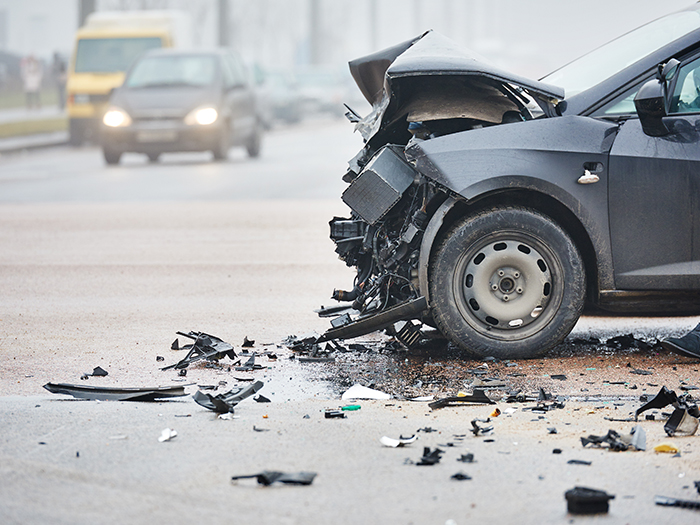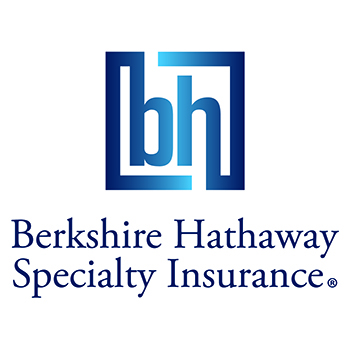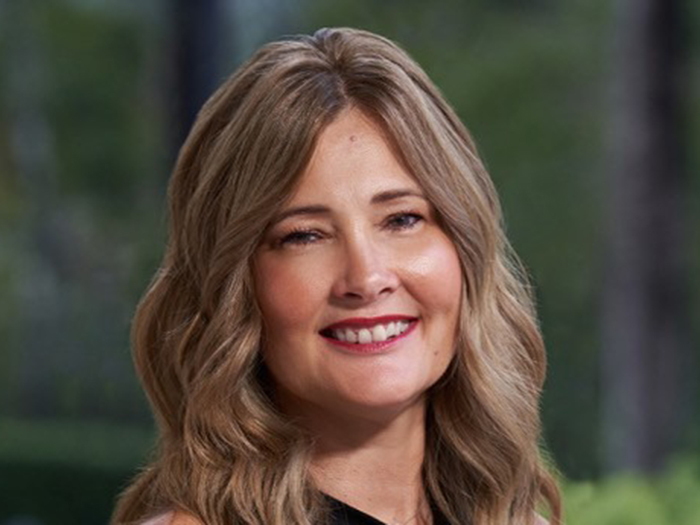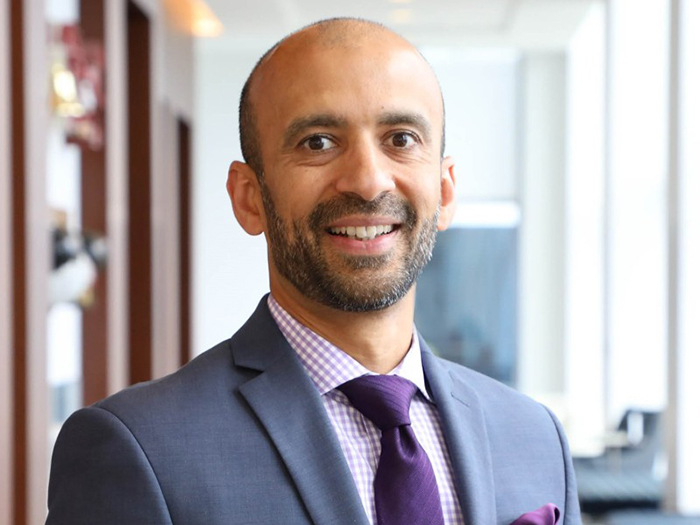Risk Scenario
How to Make a $50 Million Coverage Umbrella Evaporate. Hint: It Involves Commercial Auto
Disclaimer: The events depicted in this scenario are fictitious. Any similarity to any corporation or person, living or dead, is merely coincidental.
PART ONE: ON THE MOVE
Among general contractors making a name for themselves in the state of West Virginia, Gibbons Brothers has to be considered an up-and-comer. With $250 million in annual revenues, the firm is based in Morgantown, home to the proud tradition of West Virginia University and its Mountaineers.

There is nothing about Gibbons Brothers that isn’t homegrown. They started, basically, as a framing crew on other contractors’ home construction projects. The company — led by brothers Aaron and Roger Gibbons, both former footballers — gradually pulled itself up by its bootstraps and became a general contractor.
One of its crowning achievements, and one that caught the eye of business publication editors regionally, was that, after 15 years in business, they won the contract to oversee development of a minor league baseball stadium outside of Charleston, West Virginia. The stadium project was a gleaming success.
Buoyed by their local success, and perhaps suffering from a little ego growth, Gibbons Brothers started to eye other geographies. Having already won contracts in southwestern Pennsylvania and Maryland, they cast their net toward Florida, Georgia and Texas.
In the process of picking up some public sector and health care segment construction jobs in those states, Gibbons has seen its auto and truck fleet grow from 225 vehicles in 2018 to 440 in 2022.
The ambitious company now has lots to watch out for, though. Inflation and labor shortages are starting to make bidding on these jobs a bit tricky. Aaron Gibbons, who oversees business development and operations, is leaning on his vice president of engineering to get his numbers right.
In a sign of possible problems to come, Roger (who oversees finance, including risk management) is trying to get a few minutes with Aaron to discuss their insurance renewals. But he’s having no luck. On a call with his broker, pressed to make some decisions before renewals, Roger decides to stand pat on the company’s commercial umbrella coverage.
“You’ve got a $50 million umbrella tower,” says the broker, trying to remain patient with Roger’s lack of focus on the renewal.
“That’s fine, that’s fine. Just keep it as is,” says Roger, who, even when he’s on the phone with his broker, is scanning yet another email from Aaron in which he’s yet again tightening the screws on his engineering vice president.
PART TWO: MOUNTING EXPOSURES
We’re more than halfway through 2023 and the Gibbons Brothers’ broker is starting to see red flags.

The company is well into its work in its new markets of Georgia, Florida and Texas when the broker sees a second-quarter loss report indicating that, among the vehicles and drivers in the Gibbons Brothers’ fleet, there is a year-to-date spike of 30% in vehicle accidents.
A younger workforce, distracted driving and a growing sense of lawlessness on American roads may be some elements of the root cause, but whatever the reasons, the effect is very unnerving to the broker.
He tries to make his concerns known to Aaron and Roger Gibbons, but between managing the impacts of the pandemic and trying to mitigate fuel and supply costs that have them grinding their teeth — not to mention ongoing labor shortages — they are not giving his entreaties the time and space they deserve.
“Don’t we have, like, a $50 million commercial umbrella policy?” Aaron says to Roger, emphasizing the word “million” because it seems to him that that is a very big cushion.
“Yep,” says Roger firmly, confident in his knowledge of about one-third of what he should know to be managing his company prudently.
“I think that broker’s neurotic,” Aaron continues, at an equal disadvantage to his brother in what risk management precepts he should have his eyes on.
As 2023 heads into the fourth quarter, Gibbons Brothers is on fire but its leaders don’t know it yet.
A fatal accident in Harris County, Texas, is the first heavy shoe to drop. The company’s ongoing commercial auto frequency issues were one thing. But when one of Gibbons Brothers’ electricians T-bones a midsize SUV on a suburban street, a mother of three children is killed, along with her 6-year-old daughter. Two other siblings survive, horrified witnesses to the death of their family members.
Yet more lives are lost in Fulton County, Georgia, when the driver of a truck delivering wood framing elements to a Gibbons job site sideswipes an economy sedan driven by an elderly couple, two sweet retirees in their early 80s. Both husband and wife are killed.
Aaron’s mix of emotions at the news doesn’t even include the fear he would feel if he knew what this was going to do to his finances.
The Gibbons Brothers’ broker notes the locations of the fatal accidents: Harris County, Texas, and Fulton County, Georgia.
“Oh, this is not good, not good at all,” the broker says to himself. He too is disheartened by any loss of human life. But he is also well aware of what kind of jury awards are known to get handed down in those jurisdictions.
PART THREE: FRACTURED CARRIER RELATIONS
Litigation results from the fatal accidents in Georgia and Texas obliterate the Gibbons Brothers’ $50 million umbrella tower. They knife through that and end up paying millions more out of their own pockets in uninsured losses.

Extended into Georgia, Texas and Florida as it is, the company can ill afford to absorb the commercial insurance program cost increases it is now facing. Gibbons Brothers is looking at a 50% increase, at least, in the cost of its commercial umbrella program.
Carriers who, in the past, were willing to offer the company $25 million in coverage as part of the umbrella tower are now offering $10 million. That’s for those carriers that are willing to stay on the risk.
Several highly rated carriers are now off the risk entirely.
“You had only half of these vehicles equipped with telematics and you had no discernible driver safety program for your employees,” one exasperated underwriter says to the Gibbons Brothers’ broker when they meet to try and wangle out an agreement over renewals.
 Among the carriers Gibbons Brothers can attract, some of them are not highly rated and have spotty claims management track records.
Among the carriers Gibbons Brothers can attract, some of them are not highly rated and have spotty claims management track records.
The Gibbons brothers, who under-resourced their risk management approach as they ran to capture top-line growth, throw their hands in the air and settle for a $40 million umbrella tower instead of the previous $50 million.
But even that level of protection is pricier than what they used to pay for the $50 million umbrella tower.
The Gibbons brothers are talented and may yet sail into sunnier climates. But those on the sidelines aren’t so sure.
“They had everything covered except the commercial auto,” says that same underwriter to a friend over an after-work drink. “It was the auto that really came up and bit them in the ankles. That and their lack of knowledge about how litigious some of the local jurisdictions were.” &
![]()
Risk & Insurance® produced this scenario in conjunction with Berkshire Hathaway Specialty Insurance. This scenario is provided for general educational and informational purposes only as an example of the type of claim(s) that may be submitted under a liability policy. Applicability of coverage terms depends on the actual facts of each individual claim and the terms, conditions and exclusions of the applicable insurance policy. The information contained herein is for informational purposes only and may not be relied upon as legal, financial, regulatory, compliance, or any other type of professional advice. Not all products and services are available in every jurisdiction, and insurance coverage is governed by actual policy language.
According to Matthew Hale, Senior Vice President, Central Region, Casualty at Berkshire Hathaway Specialty Insurance, there are lessons to be learned from the Gibbons Brothers’ unfortunate predicament that can help other growing businesses prevent similar large auto losses.
- Grow smart. As companies expand, they need to be aware of how their exposures grow and change too. In this case, exposures were impacted by the use of new local subcontractors, an expanded fleet – and, importantly, moving operations into different jurisdictions, particularly those known to be heavily plaintiff-friendly.
- Consider claims and litigation trends. “Nuclear” verdicts – verdicts in excess of $10 million – are increasing in both frequency and severity, and verdicts in the tens of millions of dollars are not uncommon in single-plaintiff auto accidents. While the Gibbons Brothers thought their $50 million in umbrella coverage was adequate, it fell short when considered in light of current litigation trends.
- Invest in prevention. Gibbons Brothers’ already-high frequency of auto accidents AND lack of a consistent safety program would undoubtedly fuel higher damage awards. Investing in consistent use of telematics, and using the data to inform ongoing driver safety training and education, would go a long way in not only helping a company avoid auto accidents, but also could also significantly mitigate claim costs and damages when an accident occurs.
- Take a long-term view when considering insurance purchases. Not buying enough insurance today can cost companies significantly more in the long run – and not only in uncovered losses. As was the case for Gibbons, auto liability rates can rise significantly, and finding quality capacity to build adequate limits can be difficult (if not impossible) after adverse loss experience.
- Make a commitment to insurance and risk management. Senior management needs to understand the vital importance of proper insurance and loss prevention. With proper focus and collaboration with their broker and insurers, Gibbons possibly could have avoided having to pay damages and legal expenses out of pocket – and would be less concerned about the quantity and the quality of their current insurance program.
Risks change as a business grows. As your business evolves, be sure your insurance does too.










